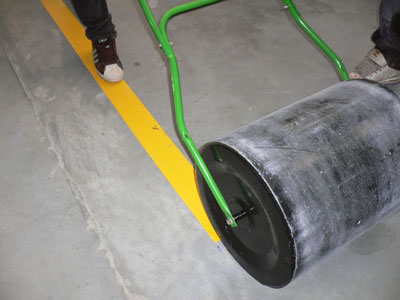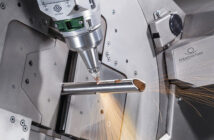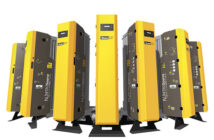CANZAC’s Superior Mark Floor Marking Tape’s patent pending beveled edge on all sides is a durable and cost-effective way to organise industrial floors of warehouses and factories.
The expansive floors of factories and warehouses are challenging to organise, yet an effective method of organisation is critical to efficiency and workplace safety. While many factories attempt to use paint to mark floors, painting requires a shut down period and the paint is difficult to maintain. Most industrial floors bear the burden of heavy forklift traffic, which can destroy painted lines in a matter of minutes. The facilities operate around the clock and shutting down to repaint is a significant cost.
Inside industrial facilities there is a frequent need to create pallet alignment systems, forklift parking areas or other clearly delineated rectangular spaces. Usually lines are marked with solid paint or a thin grade of vinyl tape. These solid lines undergo heavy traffic as forklifts and heavy machinery pass over them pushing pallets or dragging other materials which quickly damage the lines beyond recognition.
Repainting lines requires costly shut down and thin vinyl tape requires labour intensive scraping to remove it completely.
The most cost effective way of marking these spaces is therefore not with solid lines, but rather by only marking ‘L’ shaped corners. This allows plenty of unmarked space between the corners to accommodate the traffic. The floor marking will still be highly visible and create a safe organised workplace.
Using corner markers requires less material than marking solid lines. Corner markers are also much easier to maintain because if one corner is damaged, it can be individually replaced.
While corner markers have been on the market for years, they have not been designed for optimal performance in the abusive environment of warehouses and factories. Many facilities have not been satisfied with the performance of corner markers and the reason is simple. The corner markers are manufactured by die cutting or punching the shapes out of a large sheet of material, and the edges are cut at a ninety-degree angle. This means the layer of adhesive comes all the way out to that ninety-degree edge. When something pushes against the edge, it becomes dislodged when subject to even a small amount of force.
For more information:
Lance Canute
CANZAC Ltd
Tel: 03 3434 254
Email: [email protected]
Visit: www.canzac.com





























































































